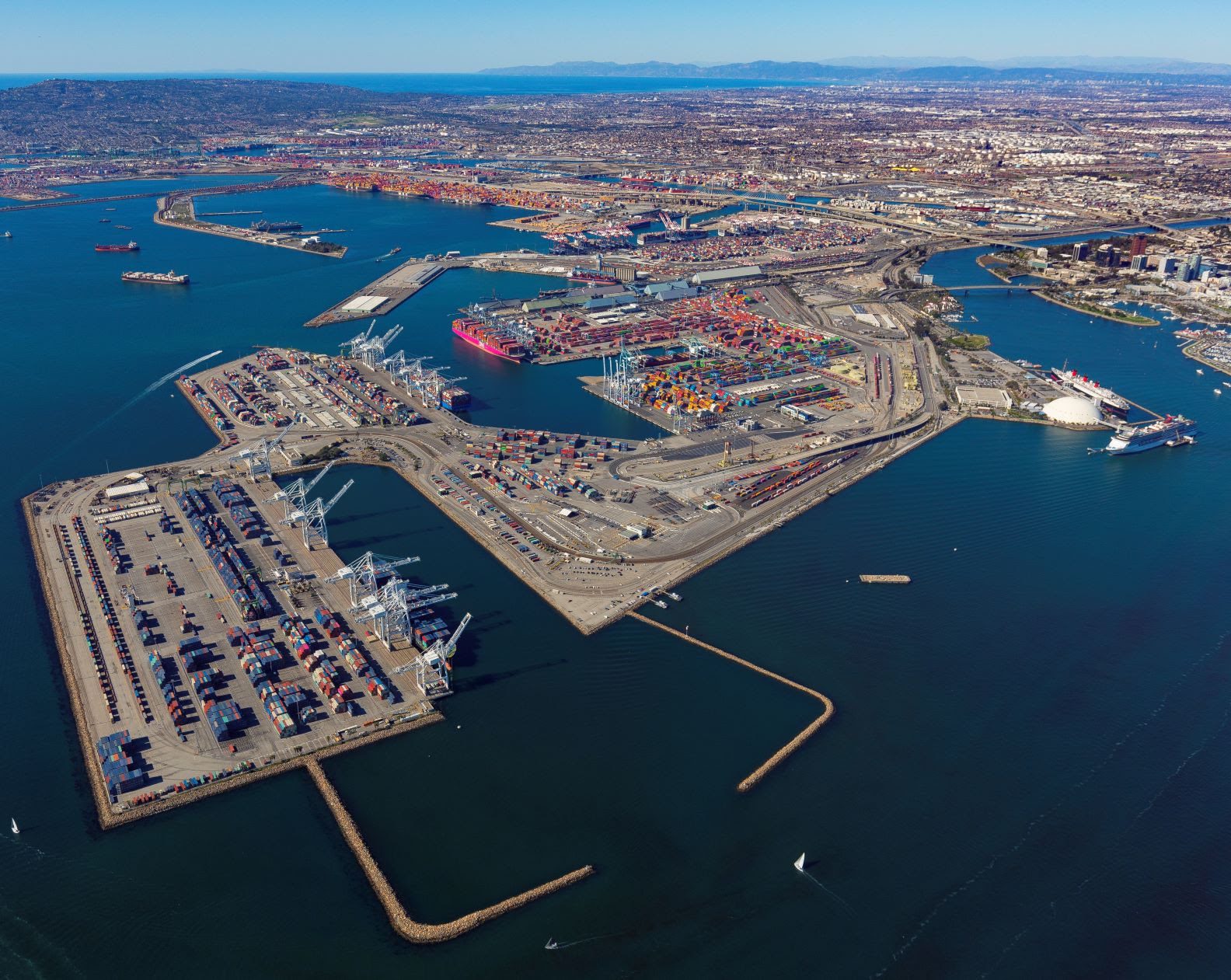Ships Fleeing The Red Sea Now Face Perilous African Weather
By Alex Longley and Paul Burkhardt (Bloomberg) –Ships sailing around the southern tip of Africa are wrestling with a bout of bad weather that has already run one vessel aground and...


The San Pedro Bay Ports of Long Beach and Los Angeles. Photo Courtesy Port of Long Beach


CHICAGO, May 18 (Reuters) – Some U.S. importers who shifted cargo away from West Coast ports to rival gateways over fears that labor contract talks could disrupt shipments have begun bringing some of that volume back, even as those negotiations stretch into their 13th month, company supply chain executives said.
But anxiety over labor negotiations only explains part of the market share losses at West Coast container ports, including the nation’s busiest at Los Angeles/Long Beach, eight importers said at the Reuters Events Supply Chain conference this week in Chicago.
That’s because retailers and suppliers have been reworking distribution strategies and sending goods to the East Coast and Gulf of Mexico to position goods closer to where consumers live.
“There is probably a 10% gap that they will never get back,” said Regina Diaz, director of operations at Million Dollar Baby, a Los Angeles-based nursery furniture seller, which was already shipping goods to new distribution centers near the New Jersey and Savannah, Georgia, ports when the West Coast labor talks began in May. Seventy percent of Million Dollar Baby’s demand is on the U.S. East Coast, executives said.
Large and small retailers have been diverting cargo away from West Coast ports since before the contract covering 22,000 dockworkers at ports stretching from California to Washington State expired on July 1, to avoid any repeat of labor disputes that in the past have stranded goods on docks or ships.
During the first three months of 2023, West Coast ports handled 40% of U.S. container import volume. They handled 45% of cargo during the same period in 2019, before the pandemic struck, according to data from Descartes Datamyne.
Extrapolating that first-quarter data over 12 months would show that more than 1 million twenty-foot equivalent units (TEU) moved away from the West Coast ports annually, starting in 2021, said Chris Jones, an executive vice president at Descartes Systems Group.
Colgate-Palmolive CL.N routed 25% of containers away from West Coast ports and has already begun reversing some of that, said Francisco Rodriguez, Colgate toothpaste maker’s director of global logistics.
The labor negotiation process, while lengthy, “is working like it is supposed to,” said Rodriguez, who added that his team monitors port activity daily and makes decisions based on that – rather than headlines about union negotiation-related conflict.
Kevin Austin, group vice president of demand and supply management at Toyota Motor North America 7203.T, declined to comment on the automaker’s cargo volume trends at Los Angeles’ port complex, but said the facility remains “critical” to the business.
The port also faces new pressure from outside the United States, importers said.
About six months ago, Million Dollar Baby started sending some upholstered furniture with price tags of under $800 per piece from China into the port at Ensenada, Mexico.
Importing to Mexico opens a legal loophole that enables Million Dollar Baby to sell those products to U.S. customers without a 25% tariff. Warehouse and labor costs are also lower in Mexico than in the United States, adding to savings, Diaz said.
(Reporting by Lisa Baertlein in Los Angeles; Editing by Chizu Nomiyama )
(c) Copyright Thomson Reuters 2023.
Join the gCaptain Club for curated content, insider opinions, and vibrant community discussions.


Join the 107,180 members that receive our newsletter.
Have a news tip? Let us know.
Access exclusive insights, engage in vibrant discussions, and gain perspectives from our CEO.
Sign Up




Maritime and offshore news trusted by our 107,180 members delivered daily straight to your inbox.



Essential news coupled with the finest maritime content sourced from across the globe.
Sign Up